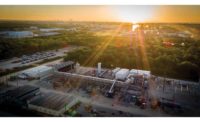In 2009, AEP built a 20-MW postcombustion CCS unit at its 1,300-MW Mountaineer Station in New Haven, W.Va. Although the plant successfully demonstrated CCS works at that scale, AEP canceled plans to move forward with a utility-scale plant due to regulatory uncertainty and dismantled the demonstration project, McHenry says.
A pilot project such as the Mountaineer CCS is not an adequate demonstration the technology will work at utility scale, McHenry adds. For example, the Mountaineer project was not subjected to conditions typical at a powerplant, such as having to ramp up power when needed and running the plant around the clock.
Environmental advocates contend this is a specious argument. "The way utilities put this, it's a self-fulfilling prophecy," says George Peridas, scientist at the Natural Resource Defense Council's Climate Center in San Francisco. "They are saying, 'We haven't built 20 of these, therefore we can't build 20 of these," Peridas says, adding that there is more than ample evidence that CCS works.
CCS is not a new technology, adds Don Broeils, vice president of power at Irving, Texas-based Fluor Corp. The company used a form of postcombustion CCS at a commercial-scale industrial facility in Bellingham, Mass., beginning in 1989, says Broeils. The plant operated successfully, producing food-grade CO2 for about 15 years before it was shut down in 2005.
Since then, Fluor has developed pilot and demonstration CCS projects around the world. One pilot project in Wilhelmshaven, Germany, is using monoethanolamine (MEA) as the solvent for efficient post-combustion capture of C02 at a coal plant. Broeils says, "We are continuing to perform work there to enhance our technology, working to drive down our energy costs and increase efficiency."
Still, while Fluor has done development projects all over the world, "it has yet to build one of commercial size" at a coal-fired powerplant, notes Dennis Johnson, executive director for process and specialty engineering for Fluor's power business.
The argument that there are no viable examples of CCS at commercial-scale powerplants may lose some steam when the two CCS plants start operations within the next year. SaskPower's $1.35-billion Boundary Dam project in Saskatchewan currently is undergoing commissioning and expects to be fully on line in a few months.
The CCS unit, incorporated into an existing 824-MW plant, uses a postcombustion regenerative amine system to capture the CO2 from one of the plant's 130-MW combustion units. Then, the gas is compressed into a supercritical state and transported via pipeline to a storage site as well as an oil field for enhanced oil recovery. The retrofitted unit will capture 1 million metric tons per year—approximately 95% of the unit's CO2 emissions.
According to SaskPower's Watson, the project is nearly on time and on budget. Nevertheless, he acknowledged there were "a tremendous amount of challenges that we overcame. The lessons learned will be enormous." SaskPower is analyzing the myriad challenges but gives the example of finding asbestos in old generating units that had to be removed and halted work for several weeks.
Meanwhile, work continues on Southern Co.'s $5.5-billion Kemper County project in Mississippi. The project is a year behind schedule and $250 million over budget. In fact, it has had problems almost since its inception. "They are really taking it on the chin," says Stanford's Wara.
Kemper's difficulties have less to do with CCS technology than with construction problems with the plant and its associated infrastructure. John Huggins, vice president of generation at Mississippi Power, a subsidiary of Southern Co., says the design team underestimated how much piping and wiring was needed. "It just took time to install the actual quantities after the detailed design revealed what the actual quantities were going to be," he notes. And a more drawn-out schedule has an impact on cost, especially labor costs. "If there's additional quantities to install, it's going to cost you more to do that," Huggins says. The project is expected to come on line in the first quarter of 2015.








Post a comment to this article
Report Abusive Comment